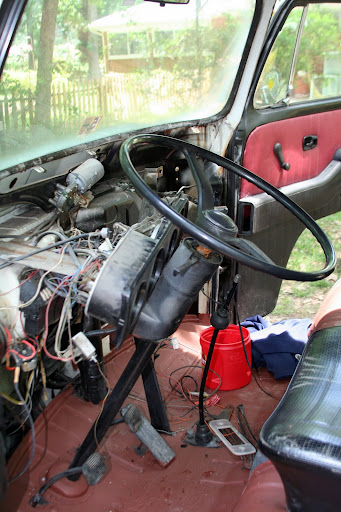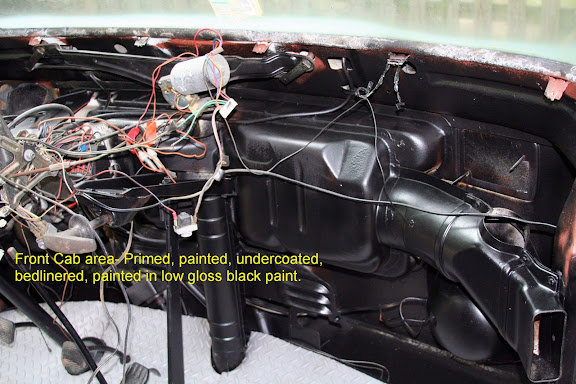I went on vacation to North Carolina.
My daughters and I stayed at my parents.
While I was there, I had the interior panels made.
I say made, because my Dad made them. I painted and had some ideas, but Dad's the man.
He made them and I really dig them. He has no idea how much I appreciate it.
He also took vacation and worked hard to get these done.
Dad's has some good tools and wood paneling, and paint, and paint brushes,
and basically everything needed to make these panels.
It starts with a work shop, some tools and wood.
My Dad had some "Beady board" wood panels. We decided these would work very well.
They are similar to the ones I was going to buy earlier.

In order to make the panels for the interior, we used the
panels that were in the bus. I brought them with me to North Carolina.
Lay the panels flat, clamp them and trace.
The old panels will make a good template for the new ones.

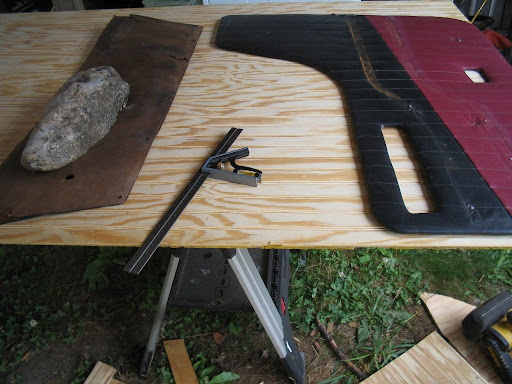
Once the panels were traced we cut them out and sanded the edges and the face of the wood.
The face will be painted with a clear urethane for gloss.
I want the wood to have a natural look.

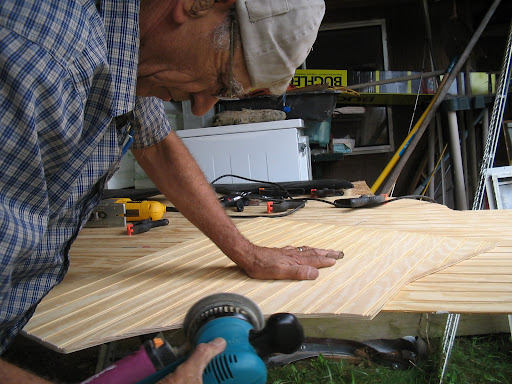
Sanding the edges.

My brother Will was there helping as well. Thanks Bro.
Among other things He gave me a backyard haircut. I needed one.
He does a good job.
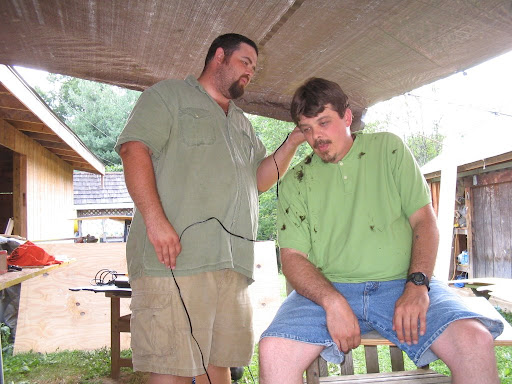

What's he laughing at?

As each panel was cut and sanded, I painted them with clear urethane
Multiple coats help to bring out the shine.

My youngest helped to paint.
She added many coats.
She's been helping me with VW's
since she was 3.
She's a good worker.

My Dad had some wood flooring.
I like the color.
It's light in color but dark enough to go well with the wood paneling.
Light on the sides, darker on the floor, the ceiling will more than likely
be light as well. I'll install those later. Thanks Pop.

Here you go.
A (mostly complete) 1977 VW Bus
wood interior. Door panels and the interior side pieces. I still have a couple of panels to make. I brought uncut pieces home to complete the job.
A lot of hard work went into
these panels. I really enjoyed spending time with Dad and my
Brother. It was a good time.
They will look great in my bus.










